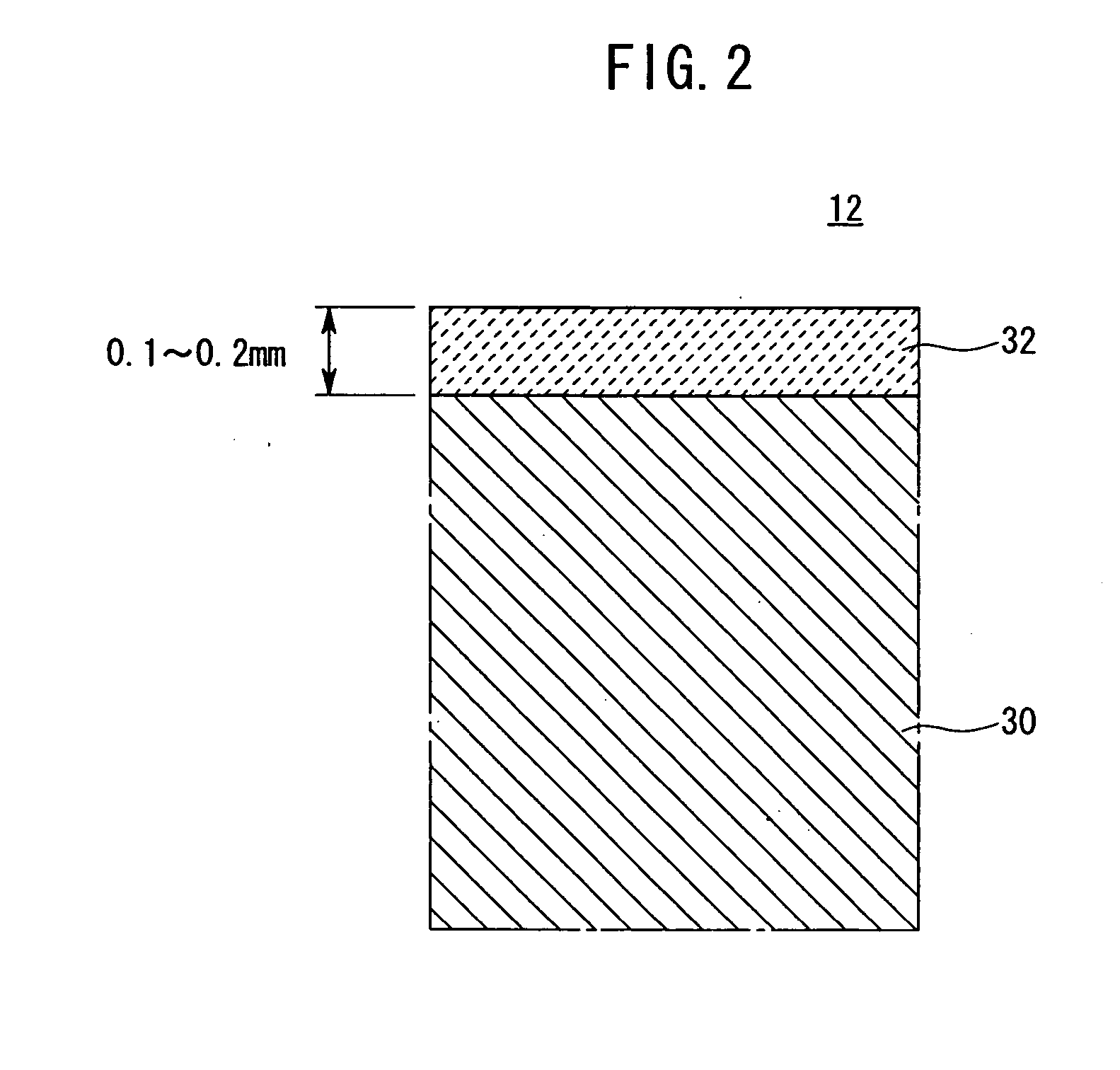Mold for casting and method of surface treatment thereof
- Summary
- Abstract
- Description
- Claims
- Application Information
AI Technical Summary
Benefits of technology
Problems solved by technology
Method used
Image
Examples
Embodiment Construction
[0033] The casting die of the present invention and the surface treatment method thereof will be explained in detail below with reference to the accompanying drawings as exemplified by preferred embodiments.
[0034]FIG. 1 is a schematic vertical sectional view illustrating a casting apparatus provided with a casting die according to an embodiment of the present invention. The casting apparatus 10 is usable to cast an unillustrated cylinder block as a cast product of aluminum. The casting apparatus 10 comprises casting dies, i.e., a fixed die 12, side movable dies 14, 16, and an upper movable die 18. In particular, the fixed die 12 is provided with a bore pin 20. A sleeve 22 is externally installed to the bore pin 20, and thus a cavity 24 for obtaining the cylinder block is formed in the casting apparatus.
[0035] A sand-core 26, which is provided to form a water jacket of the cylinder block, is arranged in the cavity 24. The sand-core 26 is supported by an unillustrated support member...
PUM
| Property | Measurement | Unit |
|---|---|---|
| Length | aaaaa | aaaaa |
| Length | aaaaa | aaaaa |
| Length | aaaaa | aaaaa |
Abstract
Description
Claims
Application Information
 Login to View More
Login to View More - R&D
- Intellectual Property
- Life Sciences
- Materials
- Tech Scout
- Unparalleled Data Quality
- Higher Quality Content
- 60% Fewer Hallucinations
Browse by: Latest US Patents, China's latest patents, Technical Efficacy Thesaurus, Application Domain, Technology Topic, Popular Technical Reports.
© 2025 PatSnap. All rights reserved.Legal|Privacy policy|Modern Slavery Act Transparency Statement|Sitemap|About US| Contact US: help@patsnap.com



